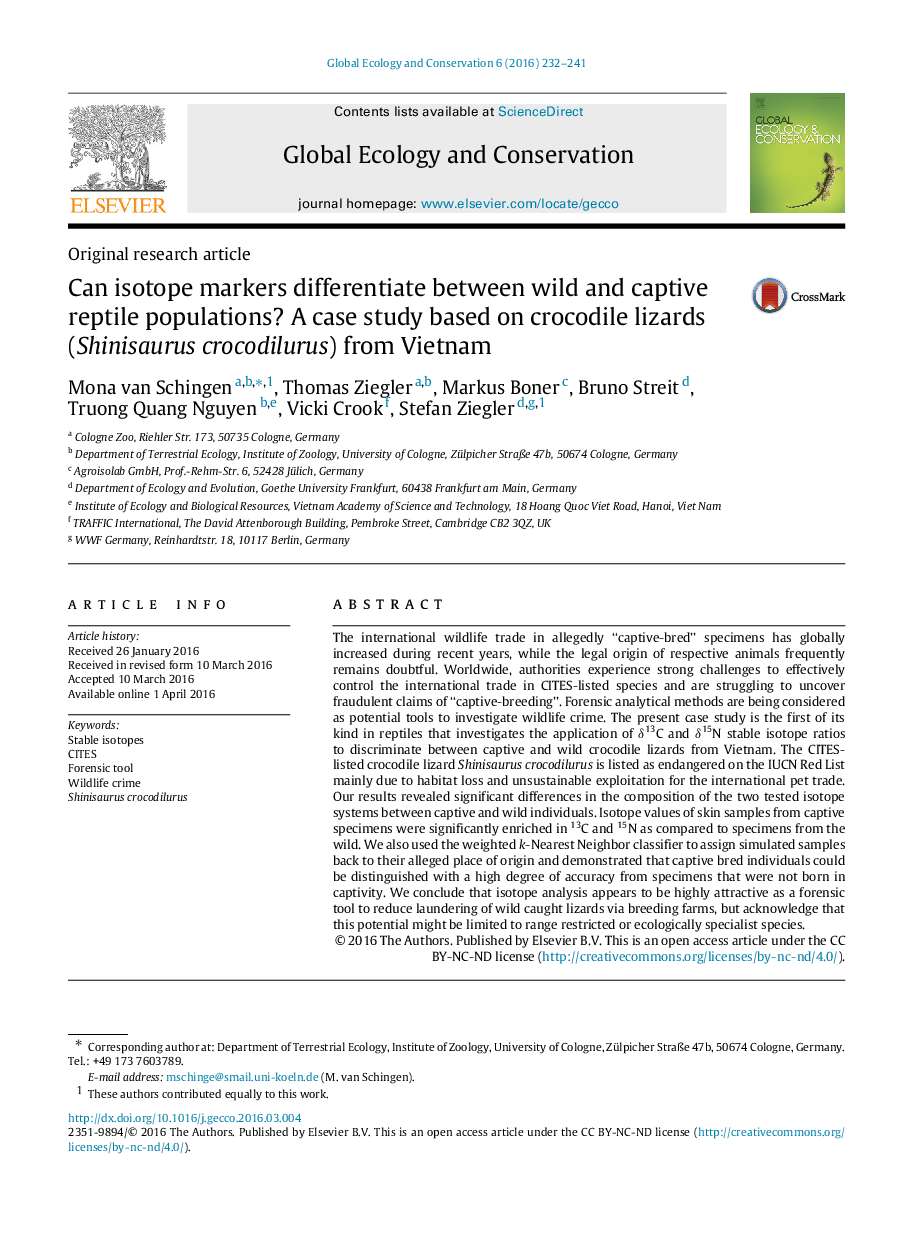| Article ID | Journal | Published Year | Pages | File Type |
|---|---|---|---|---|
| 4379648 | Global Ecology and Conservation | 2016 | 10 Pages |
The international wildlife trade in allegedly “captive-bred” specimens has globally increased during recent years, while the legal origin of respective animals frequently remains doubtful. Worldwide, authorities experience strong challenges to effectively control the international trade in CITES-listed species and are struggling to uncover fraudulent claims of “captive-breeding”. Forensic analytical methods are being considered as potential tools to investigate wildlife crime. The present case study is the first of its kind in reptiles that investigates the application of δ13δ13C and δ15δ15N stable isotope ratios to discriminate between captive and wild crocodile lizards from Vietnam. The CITES-listed crocodile lizard Shinisaurus crocodilurus is listed as endangered on the IUCN Red List mainly due to habitat loss and unsustainable exploitation for the international pet trade. Our results revealed significant differences in the composition of the two tested isotope systems between captive and wild individuals. Isotope values of skin samples from captive specimens were significantly enriched in 1313C and 1515N as compared to specimens from the wild. We also used the weighted kk-Nearest Neighbor classifier to assign simulated samples back to their alleged place of origin and demonstrated that captive bred individuals could be distinguished with a high degree of accuracy from specimens that were not born in captivity. We conclude that isotope analysis appears to be highly attractive as a forensic tool to reduce laundering of wild caught lizards via breeding farms, but acknowledge that this potential might be limited to range restricted or ecologically specialist species.
